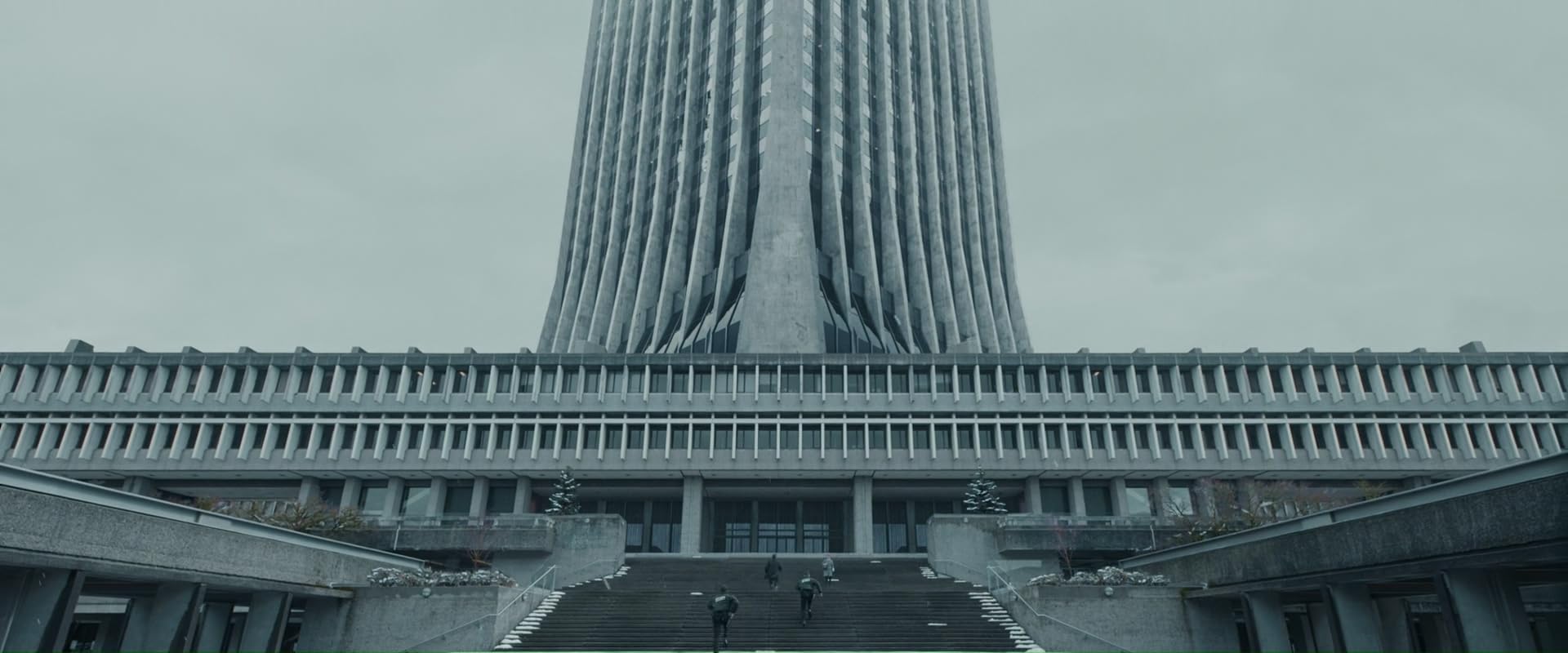Antigen. Genecore. Groundstar. Bartok Industries. More nefarious and twisted science experiments have been conducted on the grounds of Simon Fraser University’s Burnaby campus than any other place in the country—at least on film.
Since its construction in 1965, SFU has been a frequent location for movie and television productions. Its brutalist architecture, contrasted with the natural beauty of the mountain’s summit, has made the campus an ideal shooting location for government compounds, mad scientist laboratories, and futuristic space centres. Once derided as an “instant university,” SFU has come to define the look of the future on film.
Centuries before the birth of the fur trader the university is named after, Burnaby Mountain was part of the traditional territory of four First Nations: the xʷməθkʷəy̓əm (Musqueam), Sḵwx̱wú7mesh (Squamish), Sel̓íl̓witulh (Tsleil-Waututh), and kwikwəƛ̓ əm (Kwikwetlem). The mountain was an important spot for hunting and gathering, especially arbutus bark, which has medicinal uses for colds and stomach ailments. According to “A Brief Decolonized History of SFU” by Zaina Khan and Nicholas May, the mountain’s Squamish name is Lhuḵw’lhuḵw’áyten, which means “where the bark gets peeled in spring.” The decision to build on the mountain was made without First Nations consultation.
In the early 1960s, the 390-metre summit of Burnaby Mountain was one of several locations the provincial government considered for a new institution. The mountain, known as Snake Hill, had been a popular spot for hiking and recreation since the 1920s. ”Architecture determines the nature, the inner philosophy of a university,” wrote Gordon Shrum, who became SFU’s first chancellor. Shrum and the government of W.A.C. Bennett finalized the location and held an architecture contest. The winner of that competition would determine the look of Simon Fraser University.
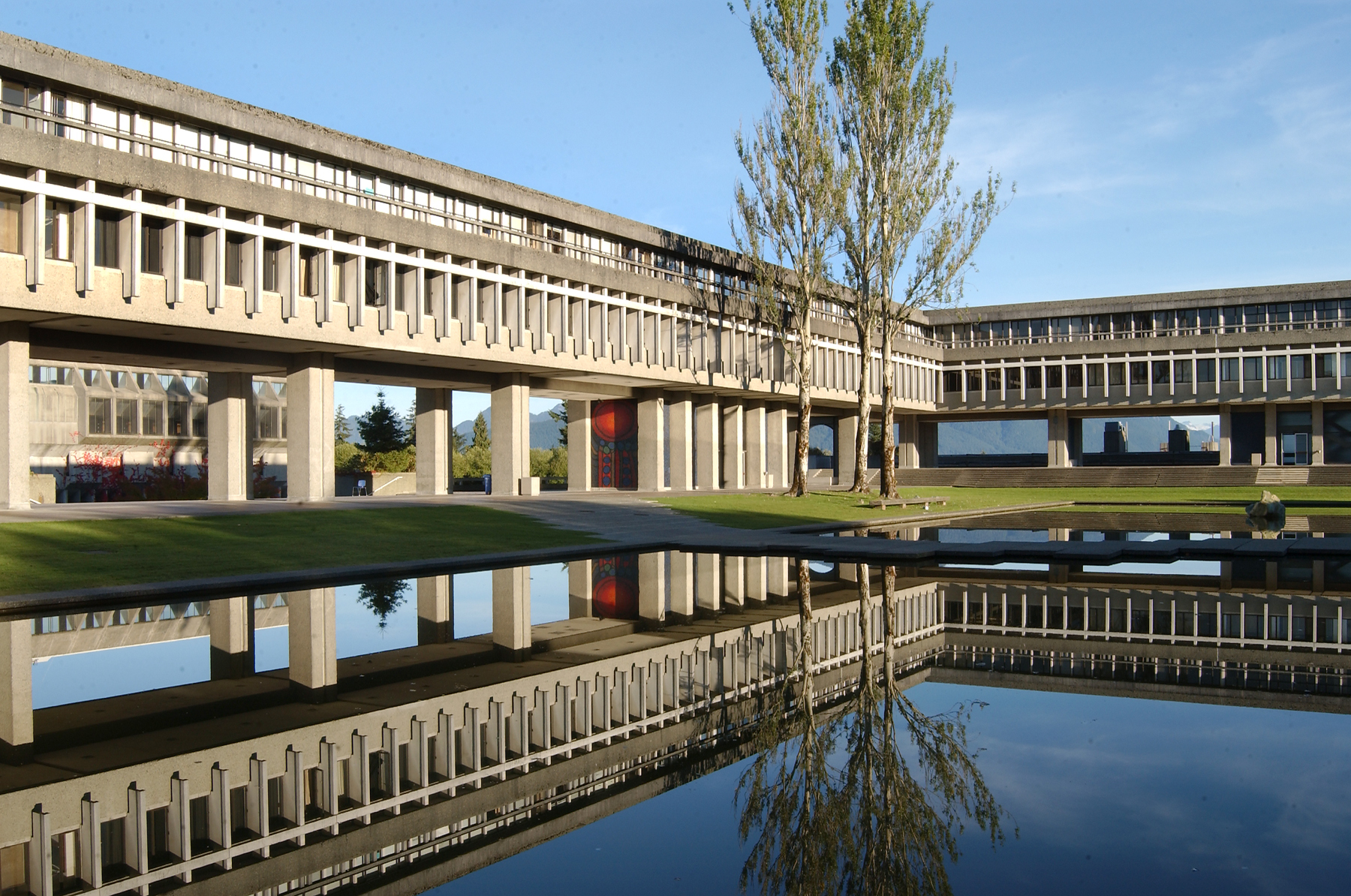
Image courtesy of Simon Fraser University.
“The rules called for a typical North American campus of scattered individual buildings for each faculty,” Arthur Erickson recalled in The Architecture of Arthur Erickson. Born in Vancouver in 1924, Erickson spent time in Europe and Asia before forming an architectural firm with partner Geoffrey Massey, eldest son of actor Raymond Massey. For their firm’s entry, Erickson studied the history of university design from Al-Azhar in Cairo to Oxford and Cambridge. He also took into account the qualities of light and weather of the Pacific Northwest. His plans broke some of the competition’s rules. According to Radical Campus: Making Simon Fraser University by Hugh Johnston, Erickson asked Massey “if they wanted to win or show what they believed in.” They took the latter approach and were as surprised as anyone to be chosen.
“Only a part of learning takes place in the classroom,” Erickson wrote. “The memorable experiences most often happen outside.” Erickson and Massey’s design, which incorporated work by the runners-up in the competition, included “an academic quadrangle in the tradition of Oxford and Cambridge … a perfect square with no variation in its façade, like the plaza mayor of Salamanca.” This would connect to a central mall, where students and teachers from all departments would naturally mingle. “Such a space needed an umbrella, a huge glass one to let the light in but to keep off the interminable Northwest Coast rain.” A student union compound and residences would also be included. “Each of these four major spaces had its own character, yet was connected by the covered walkway that spanned the mountain range.”
Erickson’s terraced design, which earned international acclaim, would break down barriers between departments, promote intermingling of faculty and students, and blend the campus into the mountain itself.
In 1966, only a year after SFU opened, the first student film was shot on the Burnaby campus. The Beginning was a collaboration between students and TAs in the theatre and English departments, as well as the newly formed Simon Fraser Film Society. Described as “a 15-minute experimental film of a surrealistic nature,” The Beginning held its opening premiere at the SFU Theatre for what director Danny Singer described as “a fairly packed but bewildered audience.”
In 1971, two professional motion pictures were scheduled to film on Burnaby Mountain: an adaptation of Aldous Huxley’s Brave New World that never materialized and The Groundstar Conspiracy. Directed by Lamont Johnson and starring George Peppard, Groundstar involves an amnesiac terrorist hunted by the ruthless head of security for a secret government space station. The campus’s “futuristic” blend of interconnected concrete buildings suggests more goes on at Groundstar than meets the eye. “Is it a science fiction film?” Quentin Tarantino asked in his enthusiastic review. “I’d say yes, but just barely. But it’s the barely part that makes it unique.”
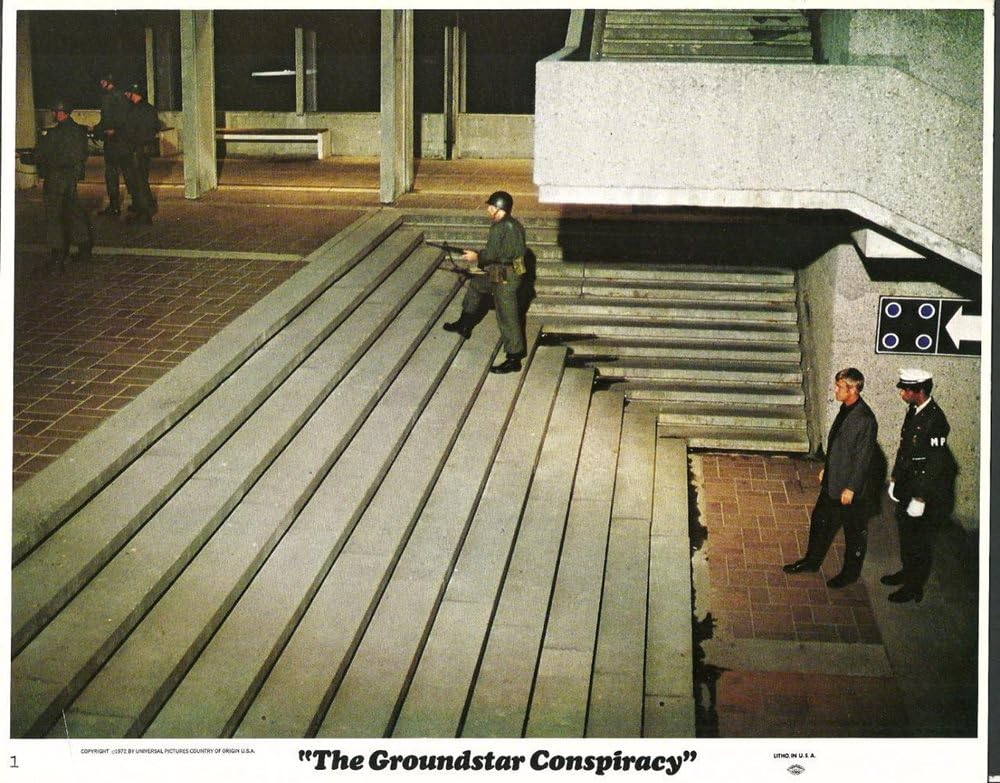
Promotional still of The Groundstar Conspiracy.
In the late 1980s and early 1990s, the campus became a mainstay for science fiction film and television productions. A notable example is The Fly II (1988), directed by Chris Walas, the Oscar-winning makeup artist and special effects designer of the first film. SFU appears as Bartok Industries, the genetics lab where Martin Brundle (Eric Stoltz) is raised in captivity and performs his experiments. The opening shots feature a helicopter landing on the central mall. While critically panned, The Fly II features a script co-written by Jim and Ken Wheat (Pitch Black), Mick Garris (The Stand), and Frank Darabont (The Shawshank Redemption).
Soon the campus was regularly appearing in The X Files, Viper, Andromeda, Arrow, The Outer Limits, Battlestar Galactica, and Stargate SG-1, among other Hollywood North productions. On film, SFU was often typecast as a clandestine research institution. In Death of the Incredible Hulk (1990), the campus plays Genecore Laboratories, where David Banner (Bruce Bixby) performs his experiments on gamma radiation. In Antitrust (2001), SFU is the headquarters of NURV, a software company run by an evil tech billionaire (Tim Robbins). In The Day the Earth Stood Still (2008), the campus appears as a “civilian processing area” during an alien invasion. In Underworld Awakening (2012), the campus is Antigen, the biochemical laboratory experimenting on vampires and Lycans. And in Corner Office (2023), SFU is home to The Authority, the faceless corporation where office worker Jon Hamm finds a hidden workspace.
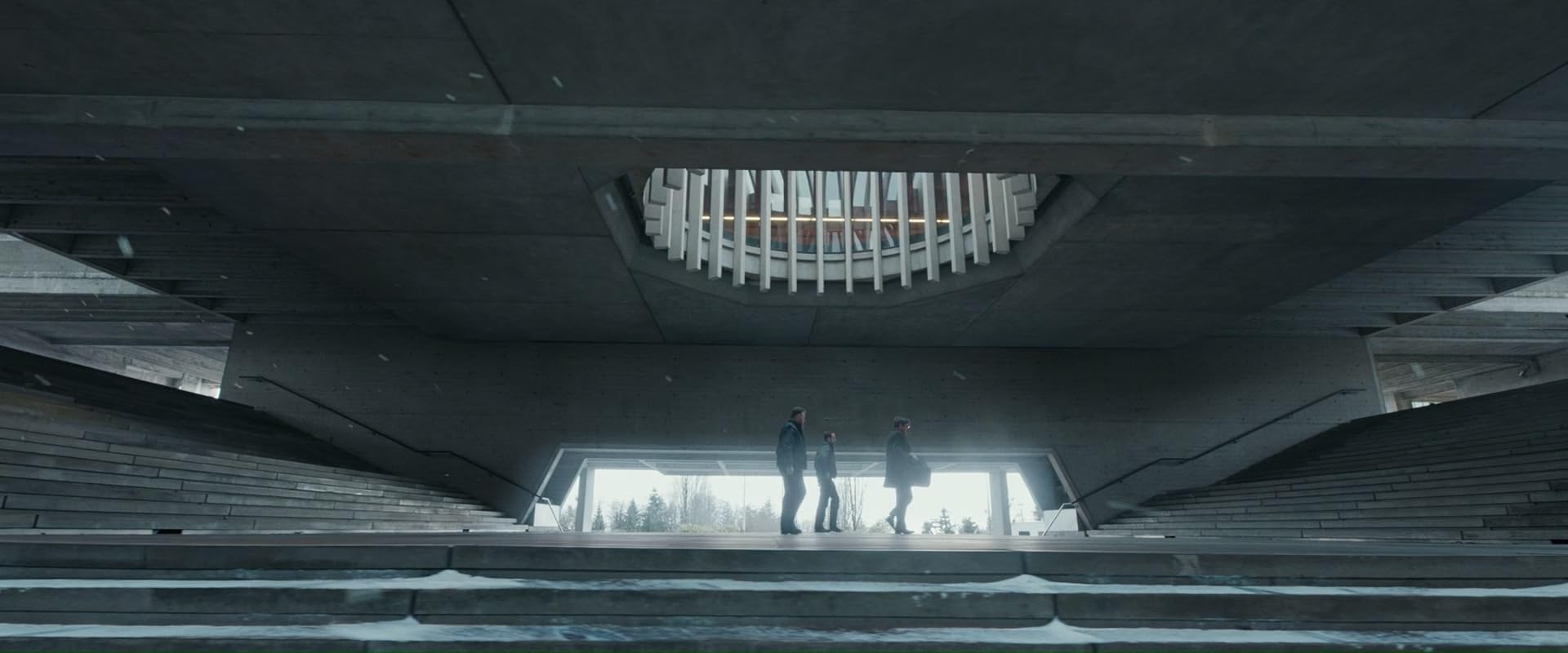
Headquarters of The Authority in Corner Office (2022).
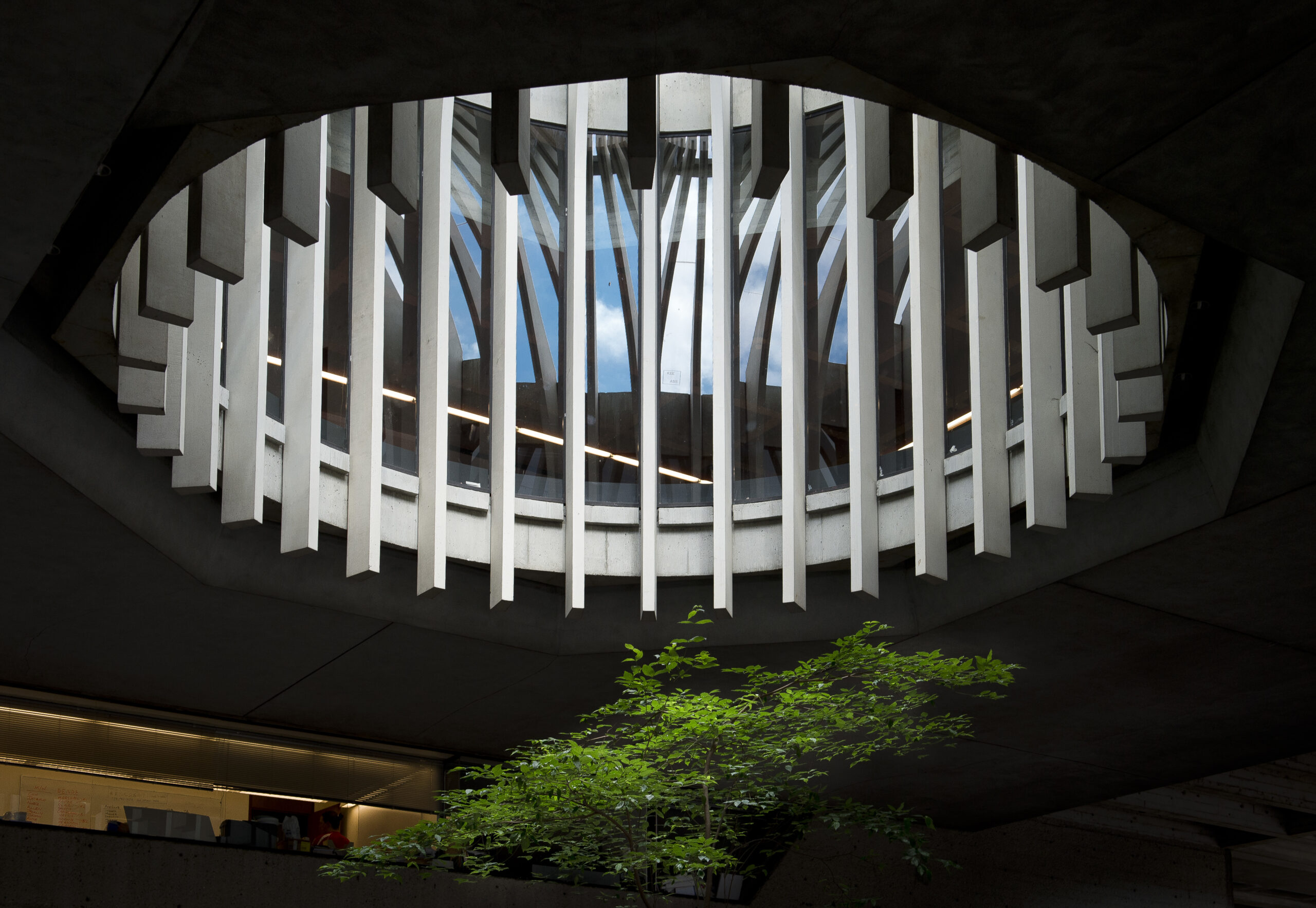
Photo by Greg Ehlers. Courtesy of Simon Fraser University.
Connection and isolation, austerity and beauty, nature and scientific achievement. The decisions Shrum and Erickson made in terms of location, materials, and design created a place of learning where, in Erickson’s words, “building and mountain would appear to be part of each other.” These same features have attracted location scouts to SFU for over 50 years. While not every film shot at the Burnaby campus falls into the science fiction genre—Double Happiness and American Boyfriends don’t, to name two—the many productions that do often use the campus to portray a futuristic realm. In a way, SFU itself is a bold mad science experiment, a space where gifted minds impose their vision on the natural world.

